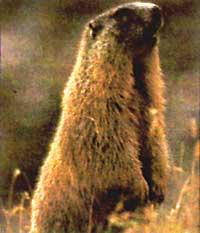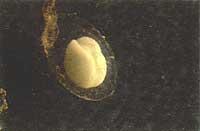Dry vertebrates of the Pyrenees
1989/09/01 Aihartza, Joxerra Iturria: Elhuyar aldizkaria
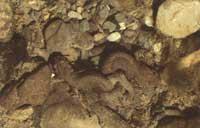
The Pyrenees, in addition to being an ideal place for mountain-related sports, are an open and unique space for fans of different areas of nature. In fact, its geographical, topographic and climatic peculiarities make that in this mountain range the ecological conditions vary drastically and, therefore, the biotic components of the ecosystem.
One of the most important factors that conditions the heterogeneity of the medium is undoubtedly altitude. The vertical rise of about 200 m makes the average temperature decrease 1ºC (at sea level, this change requires a latitude displacement of 180 km). Consequently, the overlapping of the bioclimatic estayas is evident in the Pyrenees: the beech and fir forest, in which beech and abetism predominate, follows the subalpetarra estaia formed by mountain pines and hedges, on which the supraforestal area, including the alpine meadows, and finally the tin of snow and stone, overlooks.
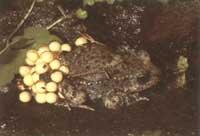
However, it should be noted that this stratification is very general and too simple. On the one hand, because altitude is not the only factor that determines these bioclimatic seasons, and on the other, because in each of them you can observe many microclimates and different habitats. That is, the number and irregular distribution of rainfall, orientation, levels of innivation and duration of snow, the different insolations, sunny effects/ospel, the complicated topography, and the concurrence of other physical and edaphic factors, make a complex mosaic of a wide variety of different habitats and microhabitats a reality. A complex and interesting mosaic.
On the other hand, altitude increases continentality, so changes that occur both throughout the year and throughout the night are sharper. Therefore, at higher altitudes winter is usually very long, limiting biological activity to five or six months a year. Consequently, the instability of environmental conditions will also be an important factor that has affected the activity of Pyrenean living beings. Therefore, as the altitude increases, the diversity of species is decreasing, being this a phenomenon visible both in plants and animals.
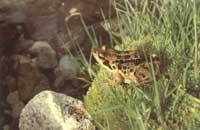
Within the living beings of the higher families, animals have, of course, the highest degree of freedom to cope with the unfavorable conditions imposed by the environment, since, in addition to the metabolic responses, they can also use ethological responses and, if the conditions become too hard, they can hide or flee.
This article will expose, as far as possible, the terrestrial vertebrates that inhabit the highest areas of the alpine and subalpine pyrenean station, as well as the terrestrial vertebrates that inhabit the highest regions of the mountain season, explaining to the extent possible their way of life and their mechanisms to cope with the harsh conditions.
Amphibians
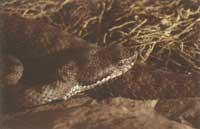
The effects related to altitude are notorious in the biological cycles of amphibians, often delayed metamorphosis or with a total stop. The arrabio (Salamandra salamandra) and the palate triton (Triturus helveticus) can reach the highest regions of the mountain estaia, and sometimes even the subalpétana, placing their limit at altitudes close to 2000 m. But among the urodelos and all the amphibians, the pyrenean triton (Euproctus asper) is the most unique and interesting species that inhabits this mountain range.
Pyrenean endemic species adapted to live in cold and fast rivers of high altitudes. This animal can be observed between the altitudes of 700 and 2400 m, being the most important populations around 2000 m. Pyrenean triton is stenothermal, with a narrow margin of tolerance to changes, so it only lives in waters with temperatures below 13ºC. In summer, if the water temperature rises above this limit, the pyrenean triton hides in the bottoms of the deepest wells, plunging into summer sleep. This phenomenon has been related to the respiratory mechanism of euproctus. In the case of pyrenean triton, although the lungs are functional, they appear reduced and skin breathing predominates.
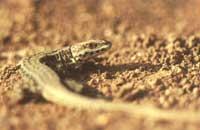
Being an active animal mainly aquatic, if the water temperature is too high, not enough oxygen will be available to meet the metabolic needs of euproctus, so it resorts to stowage or summer fattening looking for the coldest waters of the bottoms of the wells. This urodelo, therefore, can only inhabit the coldest and fastest rivers, adapting its reproductive mechanisms, anatomy and biological cycles to this specific habitat.
As for the amuros, four are the main species observed in the highest altitudes of the Pyrenees: the common toad (Bufo bufo) and the corridor toad (Bufo calamita) are species of extensive extension that can reach Pyrenean altitudes of about 2600 m. The common txantxiku (Alytes obstetricans) deserves a special mention, both for the strange work performed by the male in reproductive time (especially in fertilization and egg care), as for being an extreme example of metamophosphate delay related to altitude (Angelier took that the age of the capitals of an ibon in 2400 m was 20 years).
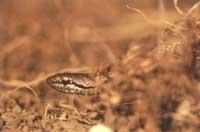
In this case, therefore, the animal would be at the limit of its living conditions and the population of txantxiku would remain for lack of predators and competitors. Finally, the red wild frog (Rana temporaria) is the most mountainous of amphibians, being able to reach almost 3000 m. Although at lower altitudes it is practically terrestrial, in the higher areas it lives around the rivers and streams used by the red frog for reproduction.
Both amphibians and reptiles, being poiquilotermos (that is, animals without the ability to regulate the internal temperature), at the arrival of snow and ice must choose a hiding place to hibernate. For this reason, amphibians and reptiles choose the most temperate corners of the biotope in which they inhabit: the vipers aspis (Vipera aspis), and the vicious lizards (Lacerta vivipara), choose to hide slabs perpendicularly found in sunlight; forest frogs, txantxiku, toads and paws.
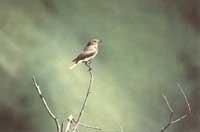
Snow plays an important protective role for living beings; under the snow of the meter the temperature is -1ºC and remains in this value, despite the fact that the outside temperature is very low. This allows amphibians and reptiles to hibernate without freezing.
Reptiles
The work on the expansion and distribution of reptiles is not very numerous. The mural lizard (Podarcis muralis) is the most abundant among the lizards, has a high ecological plasticity and can appear at altitudes of almost 3000 m. Also noteworthy is the vicious lizard that inhabits the humid meadows of the banks of the carboneros and streams to altitudes close to 2400 m (Lacerta vivipara). As its name suggests, this animal is oboviparous, but this obiparity occurs mainly in the populations of northern Europe and the Pyrenees, in the temperate regions of the peninsula, where a simple obabundance occurs.
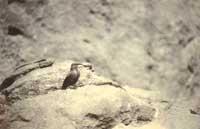
Some authors consider that all reptiles that inhabit the alpine floor are ovoviparous, which should be understood as an adaptation to altitude (and especially to the instability of climatic conditions). The viper of Aspis (Vipera aspis) is also abundant in the high areas of the Pyrenees, and most of the mountaineers who inhabit it know it perfectly; this viper, which reaches up to 2600 m, has different colorations. In addition to the above-mentioned reptiles, and if we descend towards the high mountain, there may be the crab (Anguis fragilis), the oriana green snake (Coluber viridiflavus) and the brava snake (Austrian coronella).
Birds
Birds are the most easily observed among the highest amphibian vertebrates and, in turn, the greatest diversity of species is found in this group. And it is that birds, in addition to being a homeothermal animal of high metabolism, have other advantages to adapt to these terrible environments. On the one hand, keep in mind that the feathers are the best thermal insulation produced (we also use them to make mountain loads and sleeping bags). But also, the ability to fly offers birds a unique opportunity to get away from the toughest conditions and look for more comfortable places.
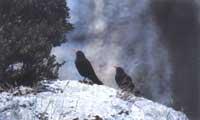
Due to these characteristics of their nature, birds are suitable animals to adapt to the conditions of life as hard as those that occur at the highest altitudes. It would be too much to talk about all the birds that can be seen in the Pyrenees, so in this article will be exposed the most outstanding species that we can find in the alpine and subalpine stela, leaving aside the birds of the montane forests.
In the alpine Estaia, that is, from an altitude of about 2200 m, few species appear. The most abundant is the dark red cauldron (Phoeniculus ochruros). This nervous bird is native to the mountain, but due to its saxophile tendency, it is now found at all altitudes, colonizing walls, quarries and all kinds of constructions, coming from human activities. Both the male and the female can be known thanks to the evident red tail that shakes repeatedly. The male is very dark, almost black, while the females and young ones have a dark brown color.
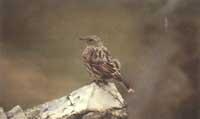
Mountain tuntun (Prunella collaris), snow sparrow (Montifringilla nivalis) and rocky bird (Tichodroma muraria) are also species originating in the mountain ranges of Eurasia, although in this case the tendency is more accused to stay in cold climates. The mountain accentuation, for example, inhabits walls and steppatic formations of more than 1800 m, with the optimal altitudinal between 2000 and 2400 m of altitude. Snow sparrow and lamb bird normally live more than 2000 m. These three species are as saxikolas as the previous one and place the nests in the holes and sections of rock. It is a specialized insectivorous rocky bird, which thanks to the claws of its long fingers and the help of the fins, travels the rocky and rocky cliffs in search of the invertebrates that hide with the long and curved beak in sections of rock and slits.
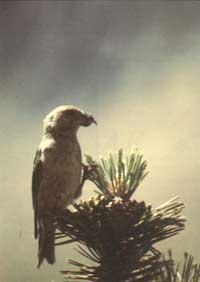
The white partridge or white lizard (Lagopus mutus) is originally cold weather and should be considered as the succession of the period that inhabits throughout Europe during the quaternary glaciations. With the process of warming the climate along the postglacier, these partridges moved north or, as in the case of the white partridge, towards the goimendite in search of the cold. The lizard feather or white partridge is cryptic and varies with the seasons: the summer brown feather, winter white dress; being an animal prepared to withstand the cold, the plumage also protects the legs and fingers. Although in its day it had a greater diffusion, today the white partridge hides in the alpine pastures and in the stone of the highest altitudes. This habitat decline seems to be due to human pressure and especially hunting.
Finally, the bearded vulture (Gypaetus barbatus) is the brightest bird in families. The populations of this spectacular scavenger, which was once much more abundant, are today very small, when the 1988 census in the southern slope of the Pyrenees points to about 40 breeding pairs.
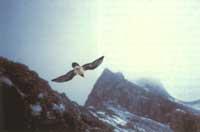
At lower altitudes, pine and spruce, inhabits the Moquoker (Loxia curvirostra). This curious bird has spread through the pineapples and from there has specialized in the consumption of pine nuts, being the striking wrong peak adaptation for this work. Next to the moquera, on the volcanic floor you can see the mountain patch (Serinus citrinella), and in the pastures and heathlands of the same trail abound the common mud (Oenanthe oenanthe) and the mountain chirtas (Anthus spinoletta). The most outstanding species that inhabit the rocky cliffs are the rocky (Monticola saxatilis), the reddish grass (Pyrrhocorax grauculus) and the subarría (Delichon urbica).
Finally, among the birds that nest below in the warmer months of the year can ascend to the high regions, the royal eagle (Aquila chrysaetos), very scarce unfortunately, the griffon vulture (Gyps fulvus), the peregrine falcon (Falco peregrinus), the raven (Corvus corone), the raven (Corvus railrax)
Mammals
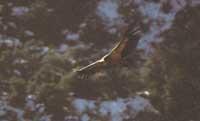
With the exception of the sarrio (Rupicapra rupicapra) and the bear (Ursus artus) among the mammals of the Goimendies, little is known about the way of life of the other species.
A slender and elusive, massive animal is the best-known species of Pyrenean fauna, and surely to say that it has become an exponent of this mountain range is not too much. Although he lived at lower altitudes in his day, excessive hunting has forced him to limit his residence to the highest peaks of the ups and downs and, if not because of the winter cold, does not fall to the forest limits. The acrobat is bright and goes up and down the cliffs and ravines, fleeing human proximity. In recent years, thanks to the measures taken to protect the massive populations, it has become abundant in some valleys, and the high annual growth rates of the populations of rebeco (13-14%) also concern us for their possible abundance, being increasingly evident the need for predators that would allow control of the populations.
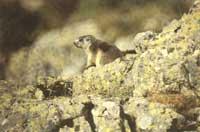
Among the great herbivores, and due to their small number, it is essential to make some reference to the Pyrenean mountain goat (Capra pyrenaica). In the Pyrenees there is only a small population composed of a few specimens (specifically in Ordesa) and its future is terrible. Although we know that Neolitos was abundant at lower altitudes, it is still unclear whether the current gummage expansion of this animal is a consequence of the leakage of the climate warming process. Practically all the destruction of the Pyrenean populations is due, however, to hunting.
Among the mammals of this mountain range, the bear is the animal that awakens the most passionate passions for and against (Ursus artus). In fact, the harsh competition we have held with him for thousands of years has left us as an inheritance the shadow of the fear of the ancestors and the fascination that generates its powerful character. The competition, however, has ended, and to the detriment of the bear, since currently only some specimens live in the Iberian Peninsula.
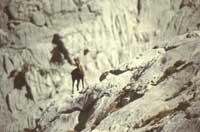
Compared to relatively abundant populations in Asturias, in the Pyrenees it cannot be said that there is a real population, and although it is difficult to carry out a detailed evaluation of the number of specimens that inhabit it, DENDALETCHE considers that it can be around 30 specimens. Due to human pressure, in addition to the reduction of quantity, the bear has also suffered alterations in habitat and food, so that, despite the fact that in ancient times its distribution was much wider, today lives only in the most remote montane forests. In the same way, although its teeth denote a type of carnivorous food, the regime of the bear is currently omnivorous, which must also be understood as a consequence of the harsh persecution suffered from the human being.
At the other end, the mammal that grows as a result of human action is the alpine marmot (marmot marmot). A friendly rodent rodent shaped like a giant squirrel that dwells on Earth, which has been killed by predators, is becoming increasingly visionary. Marmota is a gregarious herbivorous animal that inhabits the underground holes forming large colonies in the pastures and walls of the ups and downs. In these groups there are vigilantes who are always attentive, and if they run any danger, with an acid chistu they warn the whole colony, and all hide in secret. Therefore, it is often much easier to hear the danger call of the marmots than to see the same animal.
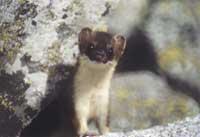
Armiño (Mustela arminea) is also an increasingly frequent goimendi mustélido. Although this small and lively carnivore has always been abundant, in recent years, and due to the increase in the number of mountaineers approaching the Pyrenees, the concentrations of syvinudeo that are occurring among the abandoned garbage are increasingly abundant in some points (Goriz de Ordesa and Soaso, for example, in the reservoir of Respumoso). However, the white armor is carnivorous and it can be thought that, in addition to the rubbish, you can also look for micromammals that circulate between them.

Finally, among the Pyrenean terrestrial vertebrates, if in a review those that can be more representative are exposed, we only have to keep the slogan of always: that the mountain chain that has become the last hiding place of several Rotic species, has to stop the strong impact that we apply to this mountain chain, if we want to avoid the disappearance of many of these animals. This loss would have no solution.

Gai honi buruzko eduki gehiago
Elhuyarrek garatutako teknologia




